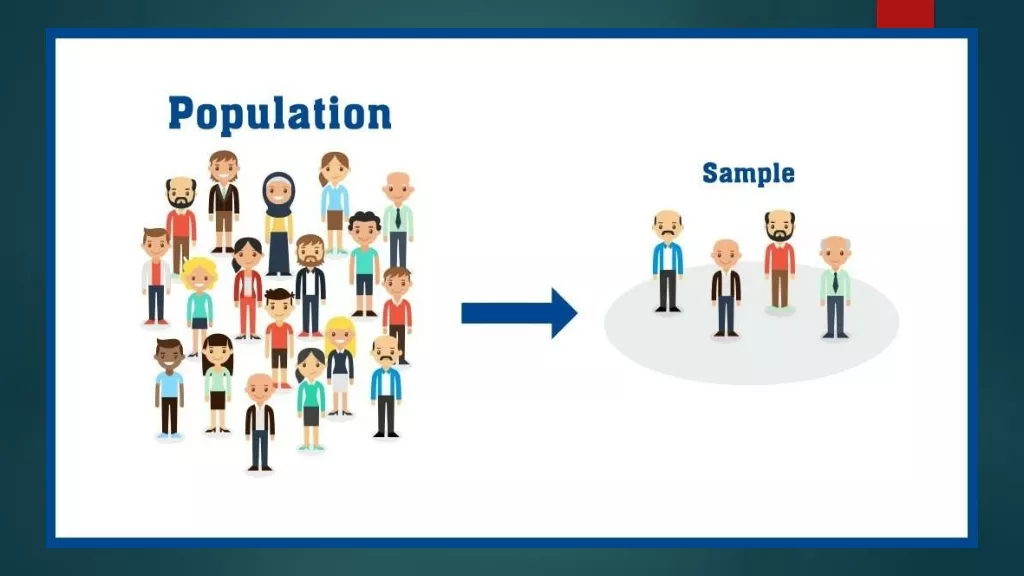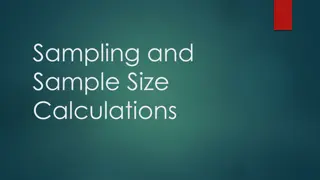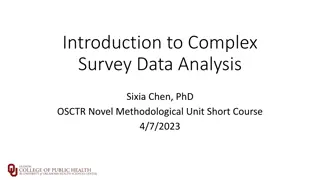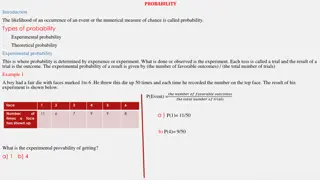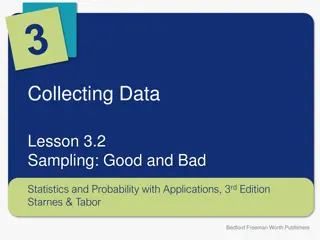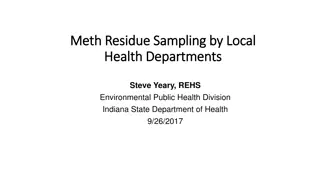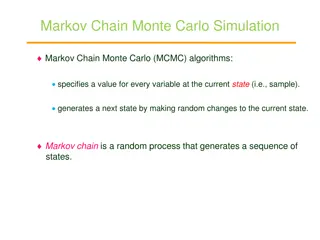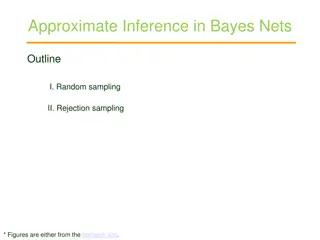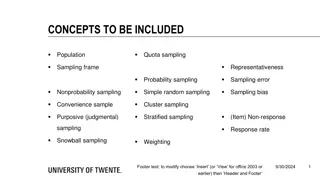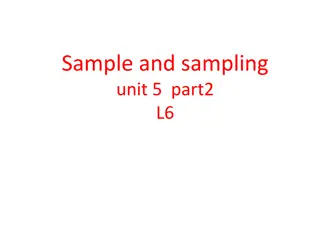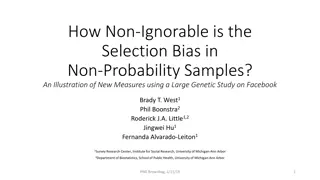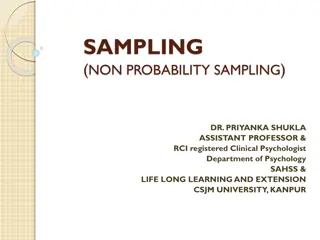Non-Probability Sampling: Types and Examples
Different types of non-probability sampling methods explained with examples: Convenience Sample, Voluntary Response Sample, and Purposive Sampling. Understand the implications of using each method in research.
Download Presentation

Please find below an Image/Link to download the presentation.
The content on the website is provided AS IS for your information and personal use only. It may not be sold, licensed, or shared on other websites without obtaining consent from the author.If you encounter any issues during the download, it is possible that the publisher has removed the file from their server.
You are allowed to download the files provided on this website for personal or commercial use, subject to the condition that they are used lawfully. All files are the property of their respective owners.
The content on the website is provided AS IS for your information and personal use only. It may not be sold, licensed, or shared on other websites without obtaining consent from the author.
E N D
Presentation Transcript
In a non-probability sample, individuals are selected based on non-random criteria, and not every individual has a chance of being included. This type of sample is easier and cheaper to access, but it has a higher risk of sampling bias. That means the inferences you can make about the population are weaker than with probability samples, and your conclusions may be more limited. If you use a non- probability sample, you should still aim to make it as representative of the population as possible. Non-probability sampling techniques are often used in exploratory and qualitative research. In these types of research, the aim is not to test a hypothesis about a broad population, but to develop an initial understanding of a small or under-researched population.
A convenience sample simply includes the individuals who happen to be most accessible to the researcher. This is an easy and inexpensive way to gather initial data, but there is no way to tell if the sample is representative of the population, so it can t produce generalizable results. Convenience samples are at risk for both sampling bias and selection bias. Example: Convenience sampling You are researching opinions about student support services in your university, so after each of your classes, you ask your fellow students to complete a survey on the topic. This is a convenient way to gather data, but as you only surveyed students taking the same classes as you at the same level, the sample is not representative of all the students at your university.
Similar to a convenience sample, a voluntary response sample is mainly based on ease of access. Instead of the researcher choosing participants and directly contacting them, people volunteer themselves (e.g. by responding to a public online survey).Voluntary response samples are always at least somewhat biased, as some people will inherently be more likely to volunteer than others, leading to self-selection bias. Example: Voluntary response sampling You send out the survey to all students at your university and a lot of students decide to complete it. This can certainly give you some insight into the topic, but the people who responded are more likely to be those who have strong opinions about the student support services, so you can t be sure that their opinions are representative of all students.
This type of sampling, also known as judgement sampling, involves the researcher using their expertise to select a sample that is most useful to the purposes of the research. It is often used in qualitative research, where the researcher wants to gain detailed knowledge about a specific phenomenon rather than make statistical inferences, or where the population is very small and specific. An effective purposive sample must have clear criteria and rationale for inclusion. Always make sure to describe your inclusion and exclusion criteria and beware of observer bias affecting your arguments. Example: Purposive sampling You want to know more about the opinions and experiences of disabled students at your university, so you purposefully select a number of students with different support needs in order to gather a varied range of data on their experiences with student services.
If the population is hard to access, snowball sampling can participants. The number of people you have access to snowballs as you get in contact with more people. The downside here is also representativeness, as you have no way of knowing how representative your sample is due to the reliance on participants recruiting others. This can lead to sampling bias. Example: Snowball sampling You are researching experiences of homelessness in your city. Since there is no list of all homeless people in the city, probability sampling isn t possible. You meet one person who agrees to participate in the research, and she puts you in contact with other homeless people that she knows in the area. be used to recruit participants via other
Quota predetermined number or proportion of units. This is called a quota.You first divide the population into mutually exclusive subgroups (called strata) and then recruit sample units until you reach your quota. These units share specific characteristics, determined by you prior to forming your strata. The aim of quota sampling is to control what or who makes up your sample. Example: Quota sampling You want to gauge consumer interest in a new produce delivery service in Boston, focused on dietary preferences. You divide the population into meat eaters, vegetarians, and vegans, drawing a sample of 1000 people. Since the company wants to cater to all consumers, you set a quota of 200 people for each dietary group. represented in your research, and you can easily compare these groups.You continue recruiting until you reach the quota of 200 participants for each subgroup. sampling relies on the non-random selection of a In this way, all dietary preferences are equally



